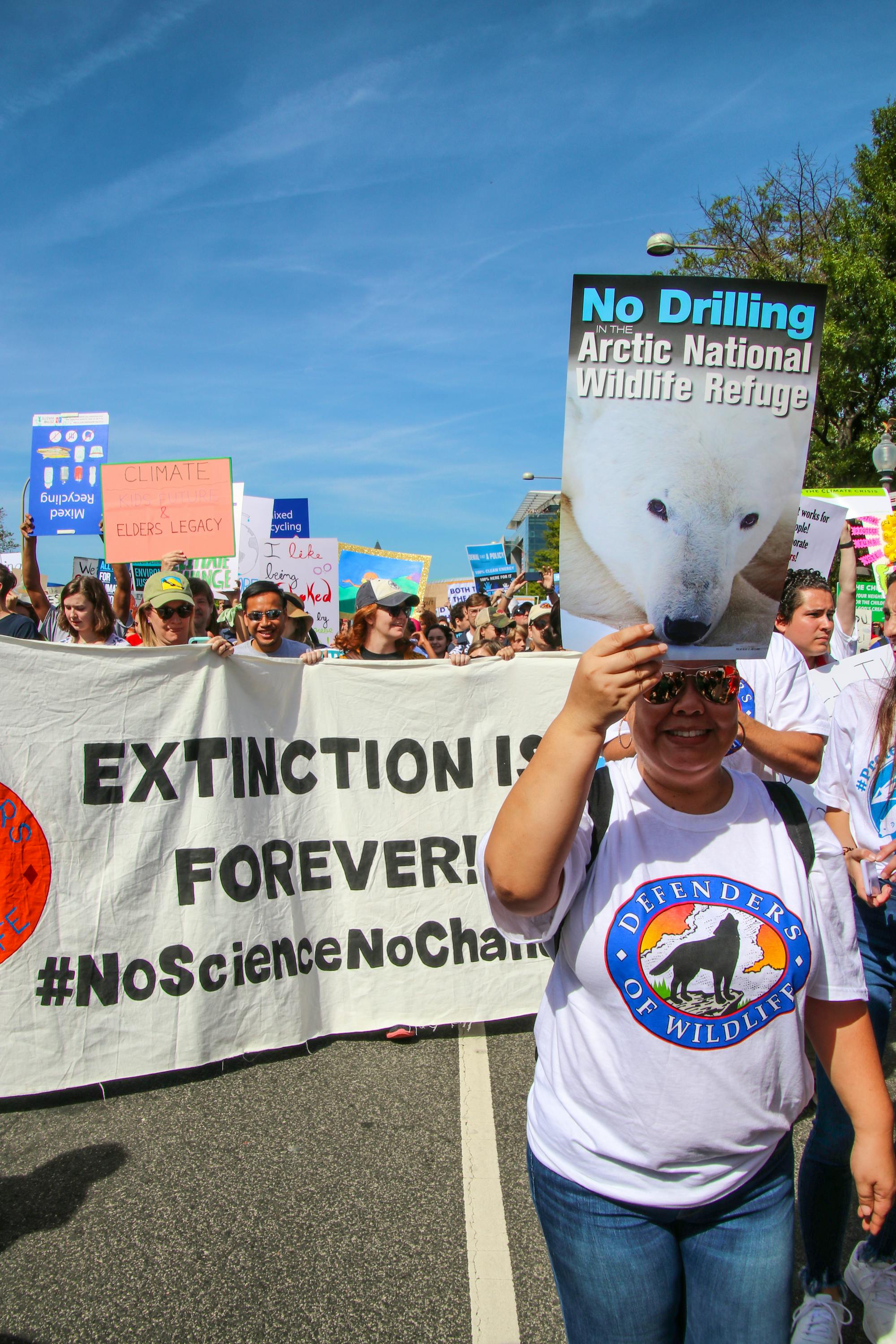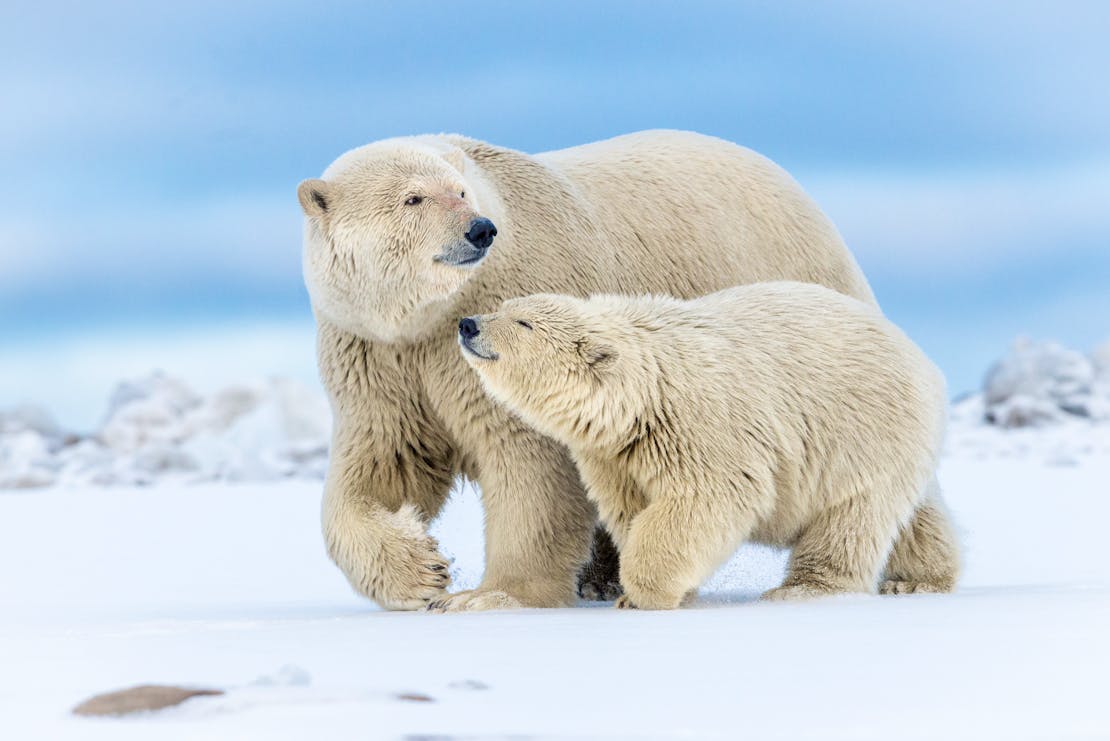September has been an intense time at Defenders, when we’ve focused a lot of our attention on protection of the Arctic National Wildlife Refuge. Though this month culminates with Climate Week, instead of transformative action on climate, the Trump administration is proposing drilling in the Arctic Refuge, a landscape that is warming twice as fast as the rest of the world. The proposed drilling will significantly exacerbate the damage already evident across the sensitive habitat, pulling at the threads that weave it together into one cohesive ecosystem. Fossil fuel development would destroy the wilderness character and wildlife values of this vital landscape, turning it into an industrial oil field and threatening the species that depend on it.
Last Friday, Defenders marched in solidarity in Washington D.C. and around the country with the Global Climate Strikes. Species worldwide are increasingly feeling the effects of climate change and declining significantly faster than we can save them. I am so grateful and inspired by the young people around the world leading us forward and speaking up and out every day demanding climate action. They understand, maybe better than anyone of my generation, what’s at stake – life on our planet, our home.



The reason we are still fighting to the protect the Arctic National Wildlife Refuge is that in December 2017, under the pretense of generating revenue to offset the $1 trillion cost of the “Tax Cuts and Jobs Act,” Congress authorized drilling in the Refuge, circumventing full and fair congressional debate. While 70% of Americans oppose oil development in the Arctic National Wildlife Refuge, the administration has repeatedly taken a wrecking ball to the sensitive coastal plain.



Defenders was on Capitol Hill as soon as Congress returned from their summer recess in early September, talking to policymakers, speaking with the public, and standing with the Gwich’in people. I was encouraged to see bipartisan legislation introduced and passed that underscores the strong support Americans have demonstrated for the Arctic National Wildlife Refuge and its iconic wildlife for decades. Senators Tom Udall (D-NM) and Ed Markey (D-MA) introduced the Arctic Refuge Protection Act, legislation to protect the Arctic National Wildlife Refuge by designating the coastal plain of the Refuge as wilderness under the National Wilderness Preservation System. Representatives Jared Huffman (D-CA) and Brian Fitzpatrick (R-PA) introduced the Arctic Cultural and Coastal Plain Protection Act, which passed the House on September 12, 2019.




On the same day, the Trump administration released its final plan to lease the coastal plain of the Arctic National Wildlife Refuge to the oil and gas industry. This is another disgraceful example of the Trump administration’s continued rejection of environmental law, sound science and the will of the American people in protecting wildlife and wild lands. The planning process hasn’t simply been ridiculously flawed, it’s made a mockery of our legislative process in the name of energy dominance and political expediency. Leasing and drilling will not only impact the 2,000 acres outlined specifically in the plan. Beyond that, it will result in a huge web of interconnected roads, pipelines, drilling pads, airstrips, storage tanks, communication centers, housing facilities and more, stretched across the coastal plain, the “sacred place where life begins.”
The fight for the Arctic Refuge and its wildlife is far from over. We will not tolerate the administration’s brazen attempt to paper over the impacts of this disastrous proposal. The plan is categorically illegal in its failure to protect wildlife, Native cultural values, and the many other outstanding resources and public values on the coastal plain.
How many barrels of oil is a polar bear worth? They are priceless to me, to Defenders and to the majority of Americans. We must turn back the clock and restore protections to these treasured public lands for the animals and communities that depend on them for the future.








